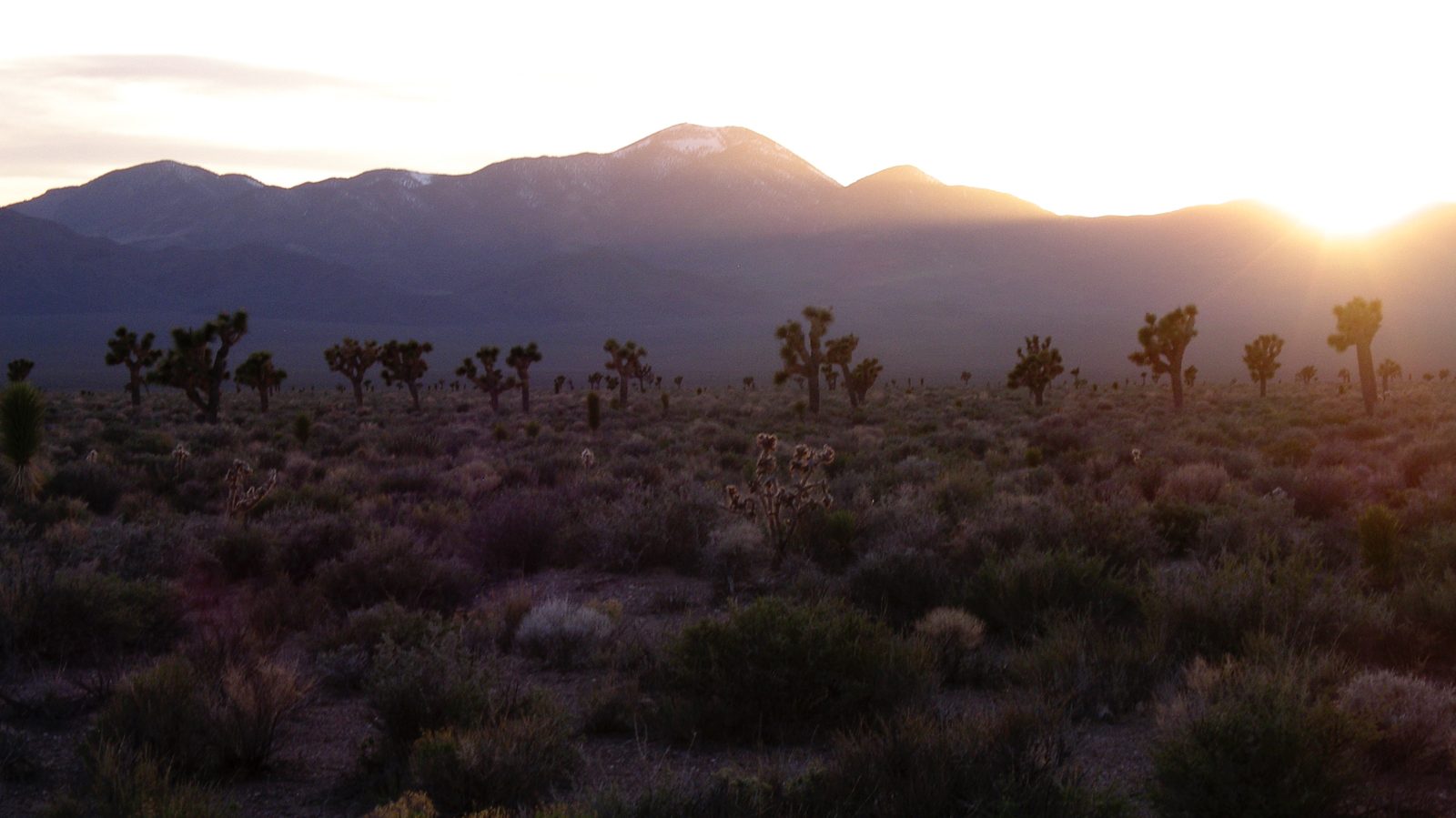Field season 2021 is already testing our Joshua trees’ limits


A fieldwork update from JTGP collaborator Karolina Heyduk, a plant physiologist and Assistant Professor at the University of Hawai’i Mānoa.
There’s heat, and then there’s Nevada’s 105°F heat that is so dry your skin feels like it should audibly sizzle when you step outside. That’s the kind of heat the Joshua Tree project’s team members found themselves in early June when we all met in the desert to collect some preliminary data for our NSF award. We’re about a year into the project; seeds of Joshua trees were started back in 2020, seedlings were out-planted earlier this spring, and now we’re giving them a year to acclimate to their common gardens before we assess the level to which local adaptation is playing a role in shaping the demography, population structure, and long-term success of this iconic desert species.
We all met outside of Las Vegas, Nevada, where JTGP scientists Dr. Lesley DeFalco and Dr. Todd Esque, both with the USGS, are based. Todd and Lesley have led the development of our common garden experiments and manage the day-to-day operations of the gardens. Earlier this spring Todd and Lesley led a massive effort, assisted by a small army of USGS researchers, to get the seedlings started and planted in the gardens. The four common gardens are spread across the Mojave and have been planted with Joshua trees (Yucca brevifolia and Yucca jaegeriana) from populations that have different home environments. The seedlings are only a few inches tall, but already we can see differences in “garden effects” – that is, seedlings in the hottest garden are growing much more slowly than those in a wetter, more northerly garden. While we definitely could see garden effects, it’s too early to tell if plants from different populations are faring better in different gardens. That’ll be what we hope to discover with the data we will collect next year in the summer of 2022.
Instead, the June trip was all about figuring out how we are going to sample in 2022. Our ambitious goal is to sample ~80 plants per garden to get detailed measurements of photosynthesis, general stress, and gene expression. All of those measurements require either complicated instruments or careful handling of plant tissue to preserve fragile messenger RNA (mRNA) in the cells. Even the more straightforward measurements, like counting the number of leaves and leaf area, require a fair amount of time when talking about dozens of plants. Needless to say, there was a lot of troubleshooting. The high temperatures caused the instruments, plants, and people to heat up quickly. Measuring something like photosynthesis on really stressed-out plants means you spend a fair amount of time scratching your head, wondering if the instrument is broken, or if that plant is really unhappy. We had to attach a car battery to an expensive instrument, remove stubborn Russian thistle from around a garden plot, and do our best to avoid introducing dirt into our RNA tissue samples.

While that all sounds negative, in actuality the trip was a resounding success. We learned, for example, that sampling in June runs the risk of extreme heat. And while we’re interested in how heat is affecting our plants long term, too hot during sampling means the plants hunker down and hibernate physiologically; any measurements taken on an extreme heat day would only be a reflection of that short-term stress. As a result, next year’s sampling effort might happen earlier, in May. We also learned that finding plants in a large grid is like playing botanical battleship and can be a huge pain when you’re trying not to melt in the heat of the day. Marking rows between plants will help us find plants quickly (and will help us avoid accidentally stepping on them!). We all came away from the field with a much improved sense of the challenges while simultaneously really excited about how the project is progressing.
Finally, for me, this was the first time I got to see the Joshua tree seedlings in the field. I’ve always loved the desert. My first foray into field work as an undergraduate was in western Colorado and Utah, and those desert landscapes and scrubby plants sent me hurtling toward graduate school and a career in botany. Returning to that landscape always brings me joy, but especially so when it’s with a crew of amazing scientists doing some really phenomenal research.
So now we wait until next year, continuing to plan and prepare for our large sampling effort in 2022. The week after we left the desert, temperatures soared even higher. The news keeps reporting “record heat” and “historic drought,” and all we can do is water our Joshua tree seedlings and hope they can survive this summer. We set out to understand the effects of future climate change on this threatened desert species, but it’s pretty clear those climate challenges are already here.


You must be logged in to post a comment.